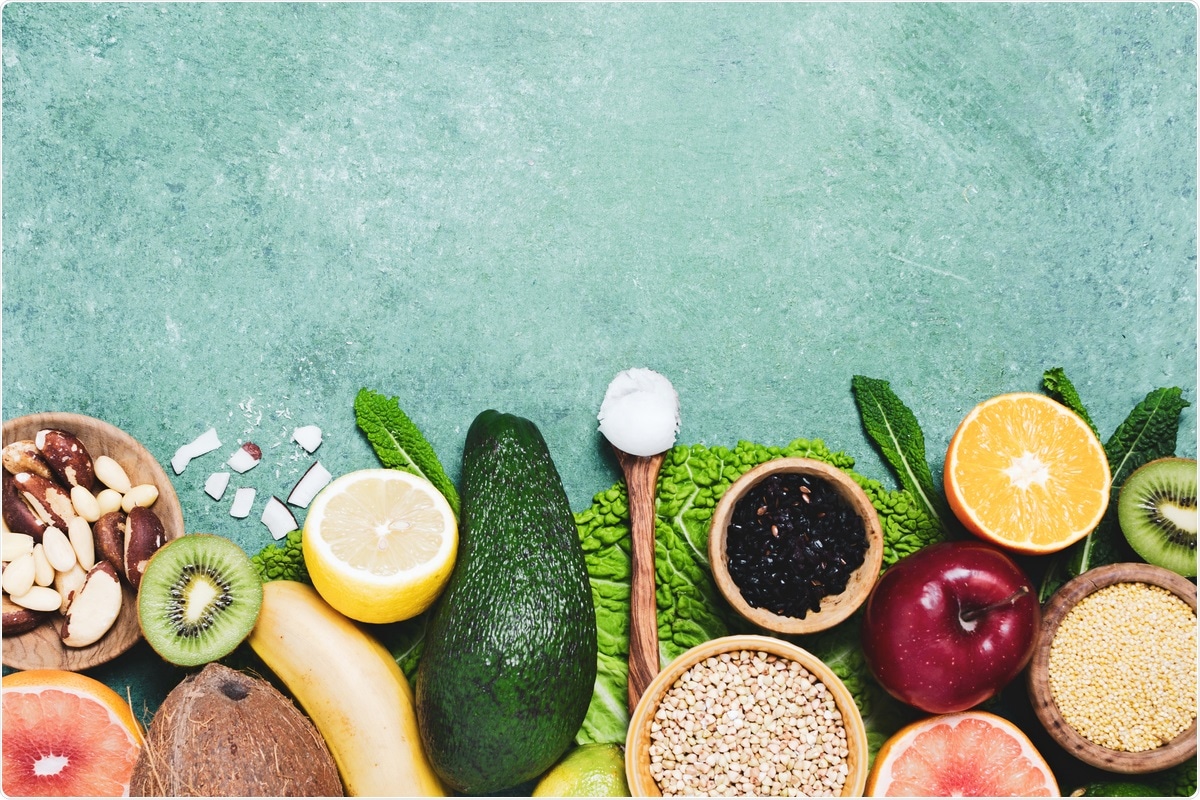The use of flavonoids as antiviral agents against SARS-CoV-2

Flavonoids are a large class of phytochemicals that are commonly found in fruit and vegetables. They are well-known to have pharmacological characteristics, including antiviral properties through their ability to inhibit viral pathogenesis at an early stage of the viral life cycle. This antiviral activity potentiates its use as a treatment against the severe acute respiratory syndrome coronavirus 2 (SARS-CoV-2), the causative pathogen of the ongoing coronavirus disease 2019 (COVID-19) pandemic.
Previous reports on flavonoids have investigated their use on five RNA viruses, such as influenza, human immunodeficiency virus (HIV), severe acute respiratory syndrome (SARS), Middle East respiratory syndrome (MERS), and Ebola. To that end, a comprehensive review of flavonoids and their antiviral potential against SARS-CoV-2 has been undertaken by researchers in Iran and recently published in the MPDI journal Molecules.

The team focused on the potential use of flavonoids as a possible treatment for coronavirus disease 2019 (COVID-19), assessing the antiviral capabilities of these phytochemicals against SARS-CoV-2.
SARS-CoV-2 background
SARS-CoV-2 is predominantly a respiratory virus, with most symptomatic individuals usually exhibiting a fever, dry cough or shortness of breath – though some do exhibit other symptoms, like loss of smell or taste, muscle pain, gastrointestinal problems or a headache.
In critical COVID-19, the virus can result in ‘cytokine storms’ – where the immune system goes into overdrive and causes excessive inflammation – and severe acute respiratory distress syndrome (ARDS), often leading to multiple organ failure. These adverse reactions can all lead to a higher rate of mortality which was seen during the pandemic, with over 182 million confirmed cases over 3.9 million deaths recorded thus far.
The viral life cycle of the SARS-CoV-2 infection consists of processes such as, attachment, penetration, biosynthesis, maturation and release. Once the virus has attached to the host cell, the viral RNA uses the host cell’s metabolic machinery to initiate the replication process. The viral messenger-RNA (mRNA) begins to generate the viral structural proteins, which include the spike (S) protein, membrane, envelope and nucleocapsid proteins.
The angiotensin-converting enzyme 2 (ACE2) surface receptor is also involved in the interaction with the virus and has been shown to act as a co-receptor for the SARS-CoV-2 virus and is highly expressed in the lungs, making its interaction with the virus a contender for therapeutic targets.
The SARS, MERS, and SARS-CoV-2 viruses remain under the umbrella of RNA βeta-coronaviruses, with the SARS-CoV-2 genome being 88% identical to the bat-derived SARS-like coronavirus, 79% similar to the SARS-CoV and having a 50% similarity to MERS. The proteins from the SARS-CoV-2 virus share approximately 90% or higher homology to SARS, with differences in ORF10 and ORF8, which may explain the infectious nature of these viruses.
With a lack of treatment for SARS-CoV-2, antivirals used for other infectious viruses had been considered, such as Remdesivir, which was introduced for the Ebola virus in 2015 due to its effect on viral RNA polymerase. Other antivirals included ones developed for the influenza virus and HIV treatment. While these were tested for SARS-CoV-2, systematic reviews concluded a lack of consensus on their benefit for SARS-CoV-2 treatment.
Antiviral flavonoid effects
Due to the lack of treatment for the SARS-CoV-2 virus, there has been an increase in research investigating different adjuvant therapies to rectify this. Flavonoids have been reported to have antiviral activity, and so this study has assessed its use for combating the COVID-19.
The antiviral effect of flavonoids can be categorized by their direct and indirect action. The direct effect includes the virus being directly affected by the flavonoid, and the indirect effect consists of the flavonoid improving the host’s defense mechanism against the virus.
Direct antiviral effect
Direct antiviral activity by flavonoids can include the inhibition of viral proteases. The SARS-CoV-2 virus generates three types of proteases, such as 3-chymotrypsin-like cysteine (3CLpro), papain-like protease (PLpro), and main protease (Mpro). These proteases are significant due to their role in cleaving viral polyprotein precursors in order to release functional proteins – this makes them an important target for therapies.
Flavonoids such as kaempferol, which is found abundantly in food, have been used in a previous study when investigating their effect on the enzymes 3CLpro and PLpro from SARS and MERS in E.coli. The result of the study included the proteases being inhibited with the use of kaempferol, which may be due to the hydroxyl group within this flavonoid as it can cause more potential antiviral activity.
To this end, due to positive research into flavonoids against SARS, which share the same proteases as the SARS-CoV-2 virus, it has been suggested that using flavonoids to target these enzymes may be beneficial for antiviral therapeutics.
Indirect antiviral effect
Indirect antiviral activity can be perceived to be the most important method of modulating the immune system against SARS-CoV-2 to prevent severe complications of the infection. A flavonoid that can be used for indirect antiviral activity is epigallocatechin gallate (EGCG).
EGCG has been found to have antifungal, antibacterial as well as antiviral properties, with studies suggesting that this flavonoid can inhibit reverse transcription, protease activity and viral entry. This would be significant for viral infections such as SARS-CoV-2 as it could disrupt the virus from having an effect when being transmitted between individuals.
Other effects of flavonoids can include inhibiting RNA polymerase, which is important for catalyzing RNA replication, and so this possible disruption of mRNA translation would result in inhibition of viral replication and the consequent spread of the infection. A recent in vitro study included in this comprehensive review has illustrated the antiviral effect of baicalin and baicalein against SARS-CoV-2 infection in Vero CCL-81 cell line, resulting in inhibition of the RNA polymerase.
Indirect antiviral activity by flavonoids could be used as an adjuvant in order to regulate severe effects of the SARS-CoV-2 virus and the ‘cytokine storm’ which follows severe infections. In vitro and in vivo experiments that investigate the use of flavonoids against SARS-CoV-2 are limited. However, this plant-derived compound may be promising as an addition for managing the virus, and so further research investigating its potential – particularly in vivo – would be beneficial.
- Khazeei Tabari, M., Iranpanah, A., Bahramsoltani, R. and Rahimi, R., 2021. Flavonoids as Promising Antiviral Agents against SARS-CoV-2 Infection: A Mechanistic Review. Molecules, 26(13), p.3900. https://doi.org/10.3390/molecules26133900, https://www.mdpi.com/1420-3049/26/13/3900.
Posted in: Medical Science News | Disease/Infection News | Healthcare News
Tags: ACE2, Acute Respiratory Distress Syndrome, Angiotensin, Angiotensin-Converting Enzyme 2, Antifungal, Cell, Cell Line, Compound, Coronavirus, Coronavirus Disease COVID-19, Cough, Cysteine, Cytokine, Enzyme, Fever, Flavonoid, Fruit, Genome, Headache, HIV, Immune System, Immunodeficiency, in vitro, in vivo, Inflammation, Influenza, Lungs, Membrane, Mortality, Muscle, Pain, Pandemic, Pathogen, Polymerase, Protein, Receptor, Remdesivir, Research, Respiratory, RNA, SARS, SARS-CoV-2, Severe Acute Respiratory, Severe Acute Respiratory Syndrome, Syndrome, Therapeutics, Transcription, Translation, Vegetables, Virus

Written by
Marzia Khan
Marzia Khan is a lover of scientific research and innovation. She immerses herself in literature and novel therapeutics which she does through her position on the Royal Free Ethical Review Board. Marzia has a MSc in Nanotechnology and Regenerative Medicine as well as a BSc in Biomedical Sciences. She is currently working in the NHS and is engaging in a scientific innovation program.
Source: Read Full Article